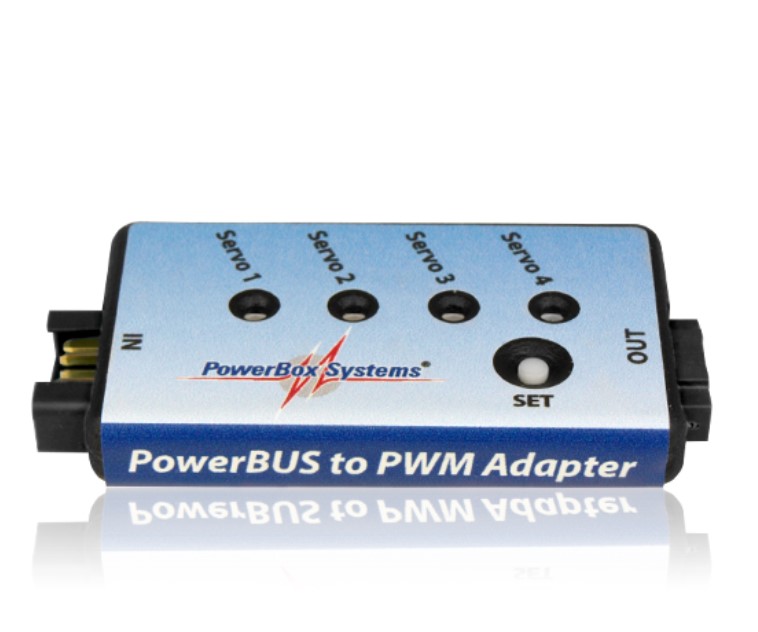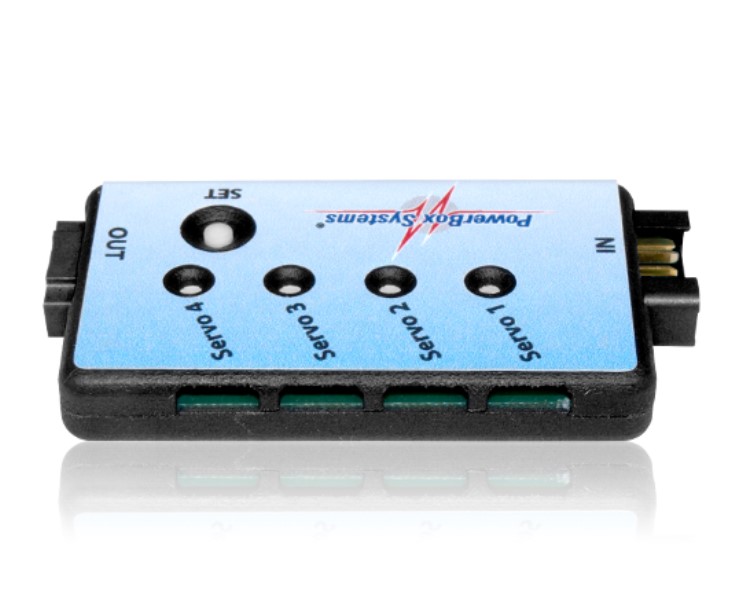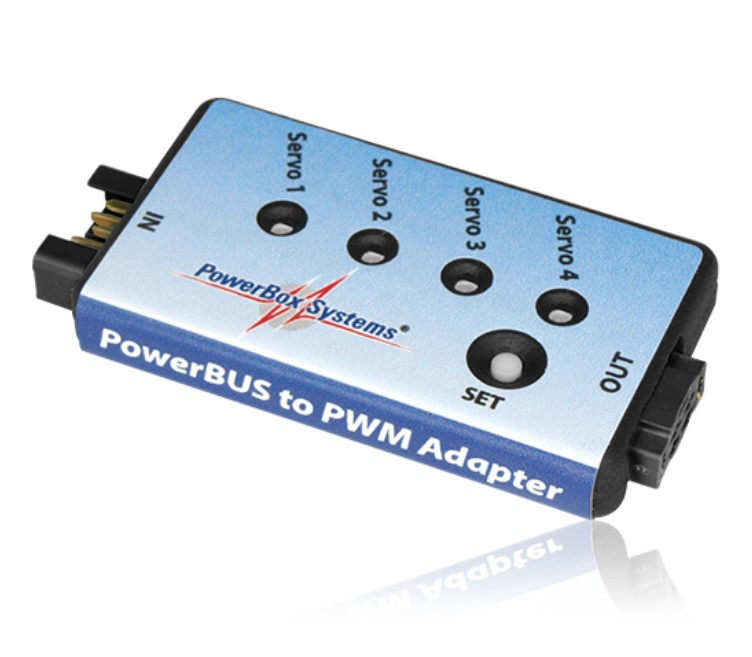The PowerBus™ to PWM Adapter is used for servos which are not fitted with a bus decoder. In this case the channel assignment is defined at the PowerBus™ to Bus Adapter. The bus signal is decoded in the adapter, which then generates conventional PWM signals for the servos. This unit allows all known makes of servo to be operated with the PowerBus™ system. As with the other adapters, all the outputs are protected against short-circuits both in the signal wire and the power supply wires. The adapter includes integral signal amplifiers for all servo outputs as well as the adapter’s PowerBus™ output. This means that as many bus adapters as required can be connected in series, i.e. cascaded.
Technical Data
| Operating voltage
|
4.0V - 9.0V
|
| Power supply
|
2S LiPo, 2S LiFePo, 5S NiCd/NiMH
|
| Maximum load current
|
20A
|
| Signal input
|
PowerBus
|
| Channels
|
18
|
| Servo sockets
|
4
|
| Servo signal resolution
|
0.5µs
|
| Dimensions
|
59 x 33 x 9 mm
|
| Weight
|
17g
|
| Temperature range
|
-30°C to +75°C
|
|
|
|
|
|
|
|
Product description
|
The PowerBus is the basis of a completely new method of wiring servos. The PowerBus consists of a three-core cable which supplies current and signal to the servos connected to it. At first glance this is nothing unusual, but the big difference lies in the signal wire. When conventional servo signals are transferred, the signal wire always carries the information for one individual servo only - this is a PWM (Pulse Width Modulated) signal. In a servo bus system the signal wire carries positional information for multiple servos in digital form. The information for individual servos includes address data, and since each servo is assigned its own individual address, it can read out “its” information from the data stream, and convert it into a movement of the control surface. PowerBus to PWM adapters can also be employed to enable the use of servos without their own decoder; in this case the adapter carries out the decoding.
|
|
The advantage of this arrangement is obvious: all you need is one three-core lead in order to supply the essential information to several servos. The wiring is much simpler, and there is also a significant weight saving.
However, until now there has always been one disadvantage to bus systems: a short-circuit in one servo causes the bus lead to be blocked, and all the servos connected to it stop working. Here at PowerBox Systems we have completely eliminated this former drawback:
The servo distributors which we have developed are protected against short-circuits in the power supply lines and the signal line! This means that, if one output is shorted out at a servo distributor, within a few micro-seconds that output is switched off, and the bus lead remains active.
|
|
Manual (9200_PowerBus_en.pdf, 3,808 Kb) [Λήψη]








